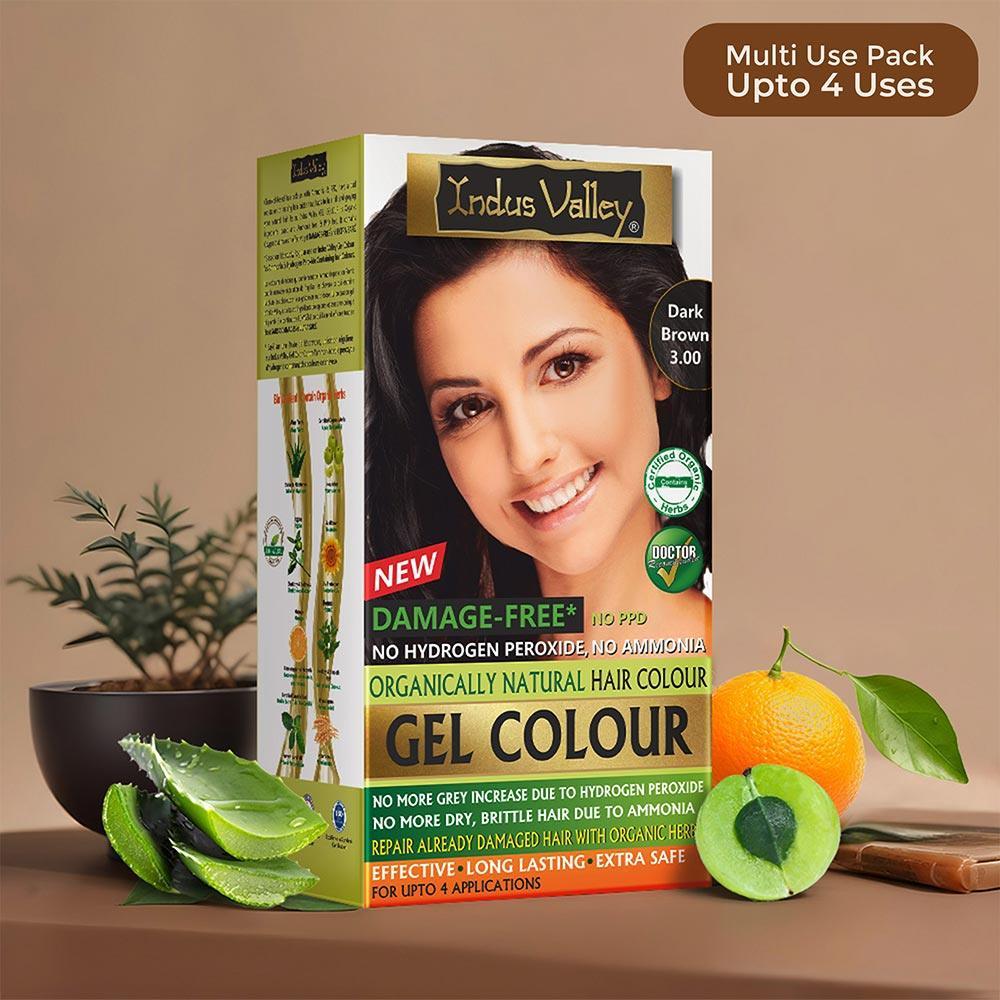
With growing awareness about the ingredients in personal care products, more and more people are making a conscious switch to safer, sustainable choices. One such area that has seen a significant transformation is hair colouring. Gone are the days when people would compromise their hair health for vibrant shades. Today, organic hair colour has become the go-to solution for those who want to colour their hair without exposing it to harmful chemicals.
So, what makes organic hair colour different, and why is it gaining popularity so quickly? Let’s explore the world of organic hair colour and understand how it’s redefining the way we look at hair colouring.
What is Organic Hair Colour?
Organic hair colour refers to a type of hair dye that is made primarily from natural, plant-based ingredients and is either free from or contains minimal synthetic chemicals. These formulations avoid common harsh ingredients found in traditional hair dyes such as:
-
Ammonia
-
Parabens
-
Resorcinol
-
Hydrogen peroxide (bleach)
-
PPD (Paraphenylenediamine)
Instead, organic hair colours are enriched with botanical extracts, essential oils, and herbal powders like henna, indigo, amla, bhringraj, and shikakai. The goal is not just to colour the hair, but to nourish and strengthen it from within.
Why Choose Organic Hair Colour?
1. Gentle on Hair and Scalp
Traditional hair dyes often lead to scalp irritation, dryness, and breakage due to the presence of strong chemicals. Organic hair colours, being plant-based, are much gentler on the scalp and hair follicles, making them suitable for sensitive skin.
2. Free from Toxic Chemicals
The absence of ammonia and other bleaching agents means that organic hair colour does not damage the hair shaft or strip away natural moisture. It helps preserve the integrity of the hair while delivering rich, lasting colour.
3. Natural-Looking Results
Organic dyes tend to produce more natural and subtle colour variations, as they work with the existing tones of your hair. This results in a blended, softer finish instead of the flat, artificial look often seen with synthetic colours.
4. Improves Hair Health
One of the biggest advantages of organic hair colour is its dual-action formula. Along with colouring, it conditions the hair, strengthens roots, improves texture, and adds shine. Herbs like henna and amla are known to stimulate hair growth and reduce hair fall, while others soothe the scalp and fight dandruff.
5. Eco-Friendly and Cruelty-Free
Most organic hair colour brands are committed to sustainable and ethical practices. They use biodegradable ingredients, eco-conscious packaging, and avoid animal testing, making them a great choice for environmentally conscious consumers.
Common Ingredients in Organic Hair Colour
Here are some popular herbs and plant extracts used in organic hair colours and their benefits:
-
Henna (Lawsonia inermis): A natural dye that gives a reddish-brown tone while strengthening and conditioning hair.
-
Indigo (Indigofera tinctoria): Used in combination with henna to create darker shades like brown and black.
-
Amla (Indian Gooseberry): Rich in Vitamin C and antioxidants; promotes hair growth and prevents premature greying.
-
Bhringraj: Known for promoting hair regrowth, reducing hair fall, and soothing the scalp.
-
Shikakai: A natural cleanser that softens hair and prevents scalp infections.
-
Neem: Offers antibacterial benefits and helps fight dandruff and scalp irritation.
-
Cassia: Often referred to as “neutral henna,” it conditions the hair without altering its colour.
These ingredients do more than colour the hair—they revitalize and heal it, offering a holistic approach to hair care.
Who Can Use Organic Hair Colour?
Organic hair colour is suitable for a wide range of people, including:
-
Individuals with sensitive skin or scalp
-
Pregnant or breastfeeding women (though it’s always wise to consult a doctor)
-
People recovering from chemical damage or hair loss
-
First-time hair colour users who want to avoid harsh chemicals
-
Vegans and environmentally conscious consumers
Since organic hair colours do not bleach the hair, they are most effective on grey hair or for enhancing natural tones, rather than for dramatic colour changes or highlights.
How to Use Organic Hair Colour
While each brand may offer specific instructions, here’s a general guide to using organic hair colour:
-
Preparation: Wash your hair with a mild, sulfate-free shampoo and allow it to dry.
-
Mixing: Combine the powder or paste with warm water or a recommended mixing agent until you achieve a smooth, lump-free paste.
-
Application: Apply the paste section by section, starting from the roots to the tips.
-
Processing Time: Leave the colour on for the recommended duration—typically between 30 minutes to 2 hours, depending on the intensity desired.
-
Rinsing: Rinse thoroughly with water. Avoid shampooing for 24–48 hours to allow the colour to develop fully.
Limitations of Organic Hair Colour
While organic hair dyes are excellent for hair health and gentle colouring, they do come with a few limitations:
-
Cannot lighten hair: Since there’s no bleach involved, they can’t turn dark hair into lighter shades.
-
Limited colour range: Unlike synthetic dyes, which offer vibrant fashion colours, organic dyes usually offer natural tones—like black, brown, red, or auburn.
-
Longer application time: You may need to keep the paste on longer to get optimal results.
-
Gradual colour development: It might take a couple of applications to achieve the desired depth of colour.
However, for those who prioritize health over speed or dramatic transformation, these are minor trade-offs.
Conclusion
The growing popularity of organic hair colour is no surprise. As people become more health-conscious and aware of what goes into their beauty products, the demand for safe, effective, and environmentally responsible alternatives is on the rise. Organic hair colours offer a perfect blend of beauty and wellness—giving you the confidence to colour your hair without compromising its natural integrity.
Whether you’re looking to cover greys, enhance your natural tone, or simply adopt a cleaner hair care routine, organic hair colour is a nurturing and sustainable way to achieve beautiful results.






